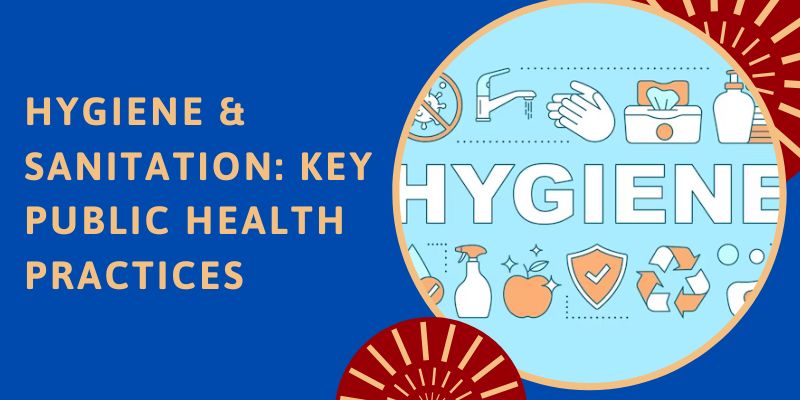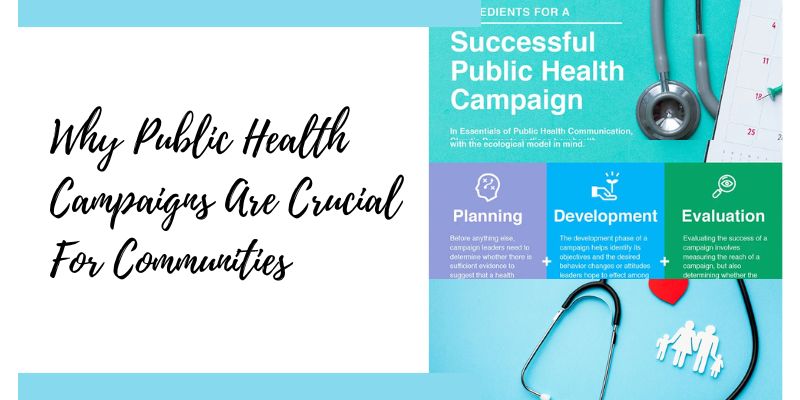Hygiene and sanitation are fundamental aspects of public health that play a crucial role in preventing diseases and promoting overall well-being. These practices involve maintaining cleanliness, proper waste disposal, and ensuring safe water and food supplies. By understanding and implementing these practices, we can work towards a healthier and safer world for everyone.
Understanding Why Hygiene and Sanitation Matter
Disease Prevention
Effective hygiene and sanitation practices are vital for preventing the spread of infectious diseases. Contaminated water, poor waste management, and inadequate personal hygiene can lead to outbreaks of diseases such as cholera, typhoid, and dysentery. By maintaining cleanliness and proper sanitation, we can significantly reduce the transmission of these illnesses.
In many parts of the world, lack of access to clean water and proper sanitation facilities remains a major public health challenge. According to the World Health Organization (WHO), nearly 2 billion people worldwide use a drinking water source contaminated with feces. This contamination leads to the spread of waterborne diseases, which are responsible for millions of deaths each year. Implementing effective hygiene and sanitation practices can help reduce this burden and save lives.
Improved Quality of Life
Access to clean water, proper sanitation facilities, and good hygiene practices contribute to a higher quality of life. Communities with better sanitation infrastructure experience lower rates of illness, reduced healthcare costs, and improved overall health and well-being.
In addition to physical health benefits, good hygiene and sanitation practices also contribute to mental and social well-being. Clean and safe environments promote a sense of dignity and self-respect, which are essential for mental health. Moreover, when communities have access to proper sanitation facilities, it reduces the stigma and social exclusion associated with poor hygiene, particularly for women and girls.
Environmental Protection
Proper sanitation practices not only protect human health but also the environment. Effective waste management prevents pollution of water sources, soil, and air, which can have detrimental effects on ecosystems. By safeguarding our environment, we ensure sustainable living conditions for future generations.
Improper waste disposal, such as open defecation and untreated sewage discharge, can lead to severe environmental pollution. This pollution can contaminate water bodies, harm aquatic life, and disrupt ecosystems. By implementing proper sanitation practices, we can minimize environmental damage and preserve natural resources for future generations.
Key Hygiene Practices
Handwashing
Frequent handwashing with soap and water is a highly effective method to prevent the spread of infectious diseases. It is especially important after using the toilet, before eating, and after handling waste. Hand hygiene is a simple yet powerful tool in disease prevention.
Studies have shown that regular hand washing can reduce the incidence of respiratory infections by 16-21% and diarrheal diseases by 30-48%. Promoting hand hygiene in communities, schools, and healthcare settings can have a significant impact on public health.
Personal Hygiene
Maintaining personal hygiene involves regular bathing, oral care, and wearing clean clothing. These practices help prevent skin infections, dental problems, and other health issues. Personal hygiene also promotes a sense of well-being and self-confidence.
Personal hygiene is not only about physical cleanliness but also about maintaining overall health. Regular bathing helps remove dirt, sweat, and germs from the body, reducing the risk of skin infections. Oral hygiene practices, such as brushing and flossing, prevent dental problems and contribute to overall health.
Food Safety
To ensure food safety, its important to handle, store, and prepare food correctly. Washing fruits and vegetables, cooking meat thoroughly, and avoiding cross-contamination are essential steps to prevent foodborne illnesses. Safe food practices help maintain the nutritional value of food and protect against infections.
Millions of people are affected by foodborne illnesses each year, making it a major public health concern. Contaminated food can carry harmful bacteria, viruses, and parasites that cause illnesses ranging from mild gastroenteritis to severe food poisoning. By following food safety practices, we can reduce the risk of foodborne diseases and promote a healthy diet.
Essential Sanitation Practices
Safe Water Supply
Access to clean and safe water is fundamental for good health. Communities should invest in infrastructure to provide safe drinking water and prevent contamination from sources such as sewage and industrial waste. Treating and purifying water ensures that it is free from harmful pathogens and chemicals.
Proper Waste Disposal
Effective waste management involves the collection, treatment, and disposal of waste materials. Proper disposal of solid waste, sewage, and hazardous materials prevents environmental pollution and reduces the risk of disease. Recycling and composting are sustainable practices that minimize waste and protect natural resources.
Incorrect waste disposal can result in serious health and environmental impacts. Open dumping of waste can attract pests and rodents, which can spread diseases. Proper waste management practices, such as segregating waste at the source, composting organic waste, and recycling, can help reduce the environmental impact and promote public health.
Sanitation Facilities
Access to adequate sanitation facilities, such as toilets and latrines, is crucial for public health. Properly designed and maintained facilities prevent the spread of diseases by providing a safe environment for waste disposal. Sanitation facilities should be accessible to all members of the community, including those with disabilities.
Sanitation facilities are crucial for hygiene maintenance and disease prevention. Inadequate sanitation facilities can lead to open defecation, which contaminates water sources and spreads diseases. Providing safe and accessible sanitation facilities in homes, schools, and public places is crucial for promoting public health.
The Effects of Hygiene and Sanitation on Public Health
Reduced Disease Burden
Effective hygiene and sanitation practices lead to a significant reduction in the burden of infectious diseases. Communities with access to clean water, proper sanitation, and good hygiene practices experience lower rates of diarrhea, respiratory infections, and other communicable diseases.
Reducing the burden of infectious diseases has far-reaching benefits for public health. It decreases the demand on healthcare systems, reduces healthcare costs, and improves the overall quality of life for individuals and communities. By prioritizing hygiene and sanitation, we can make significant strides in preventing diseases and promoting health.
Enhanced Economic Development
Improved public health through better hygiene and sanitation practices contributes to economic development. Healthy populations are more productive, have lower healthcare costs, and can invest in education and economic activities. This creates a positive cycle of growth and development for communities.
Healthy populations are essential for economic growth and development. When individuals are healthy, they can work, attend school, and participate in economic activities, leading to increased productivity and income. Additionally, reducing the burden of diseases decreases healthcare costs and allows governments to invest in other areas, such as education and infrastructure.
Empowerment of Women and Girls
Access to safe and private sanitation facilities is particularly important for women and girls. It ensures their dignity, safety, and health, especially during menstruation. Providing sanitation facilities in schools and communities empowers women and girls to participate fully in education and social activities.
Conclusion
Hygiene and sanitation are critical components of public health that have far-reaching impacts on individuals, communities, and the environment. By prioritizing these practices, we can prevent diseases, improve quality of life, protect the environment, and drive economic development. It is essential for governments, organizations, and individuals to work together to ensure access to clean water, proper waste management, and good hygiene practices for all.


